Abstract
A characteristic feature of the epidemiology of Japanese encephalitis (JE) is the occurrence of a large number of subclinical infections. The reporting of only overt cases underestimates the total level of virus transmission, a knowledge of which is essential for the evolution of control strategies. We carried out a 3-year prospective serological study between 1989 and 1991 in a primary health centre in Tamil Nadu where JE is endemic. Each year paired specimens, taken before and after the transmission season from a cohort of schoolchildren aged 5-9 years, were tested for haemagglutination inhibition (HI) antibody titres in order to study seroconversion. The seroconversion rates in the successive years were 37.5, 42.1 and 25 percentage points, and in a third of such seroconversions it was possible to establish a specific diagnosis. Seroconversion was attributable predominantly to JE virus and minimally to West Nile virus. Relatively high dengue virus activity occurred only in 1991. There were statistically significant differences in seroconversion rates between villages and this was related to variations in the ratio cattle:humans:pigs. Very high seroconversion rates occurred among children who were negative for HI antibodies before the transmission season. HI antibodies declined to undetectable levels 6-8 months later in half the children who had seroconverted. The average net annual increase of 16.2 percentage points in seropositivity was nevertheless much higher than values reported from other areas of endemicity. The overall incidence of JE cases was 15 per 10,000 children aged 5-9 years, and the estimated ratio overt:inapparent infection was 1:270.
Full text
PDF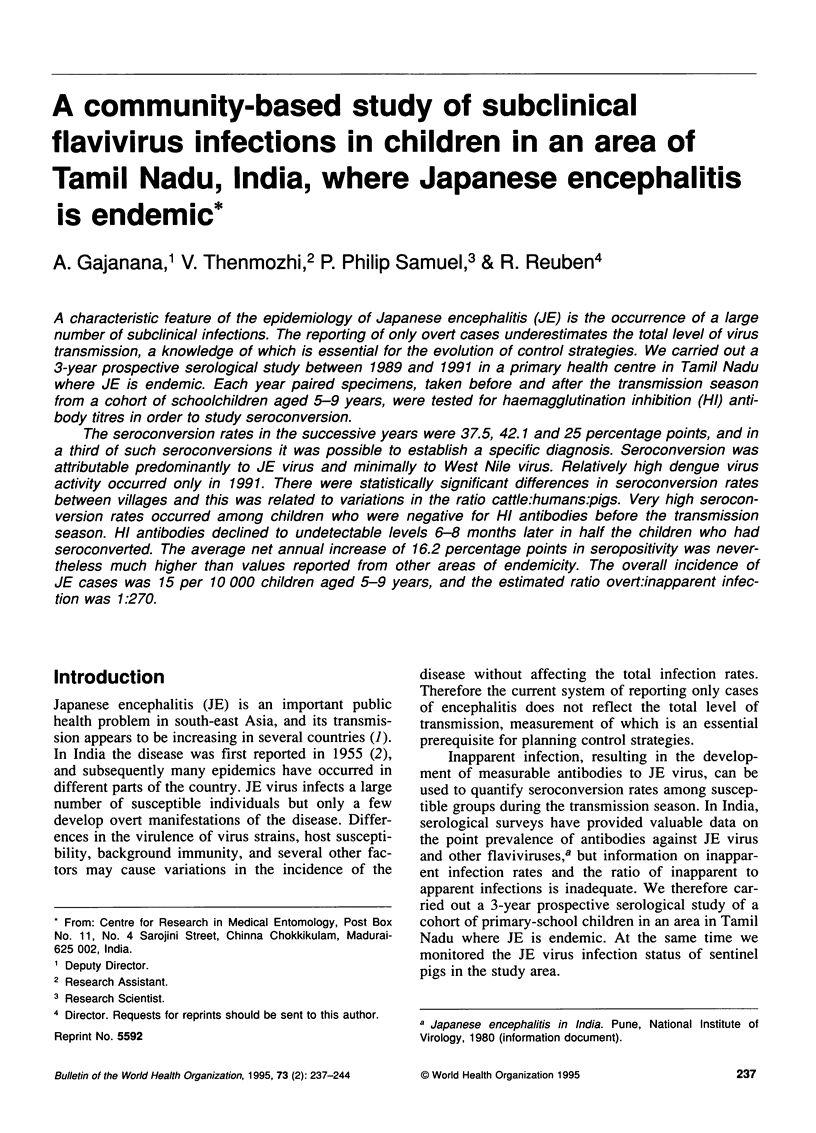
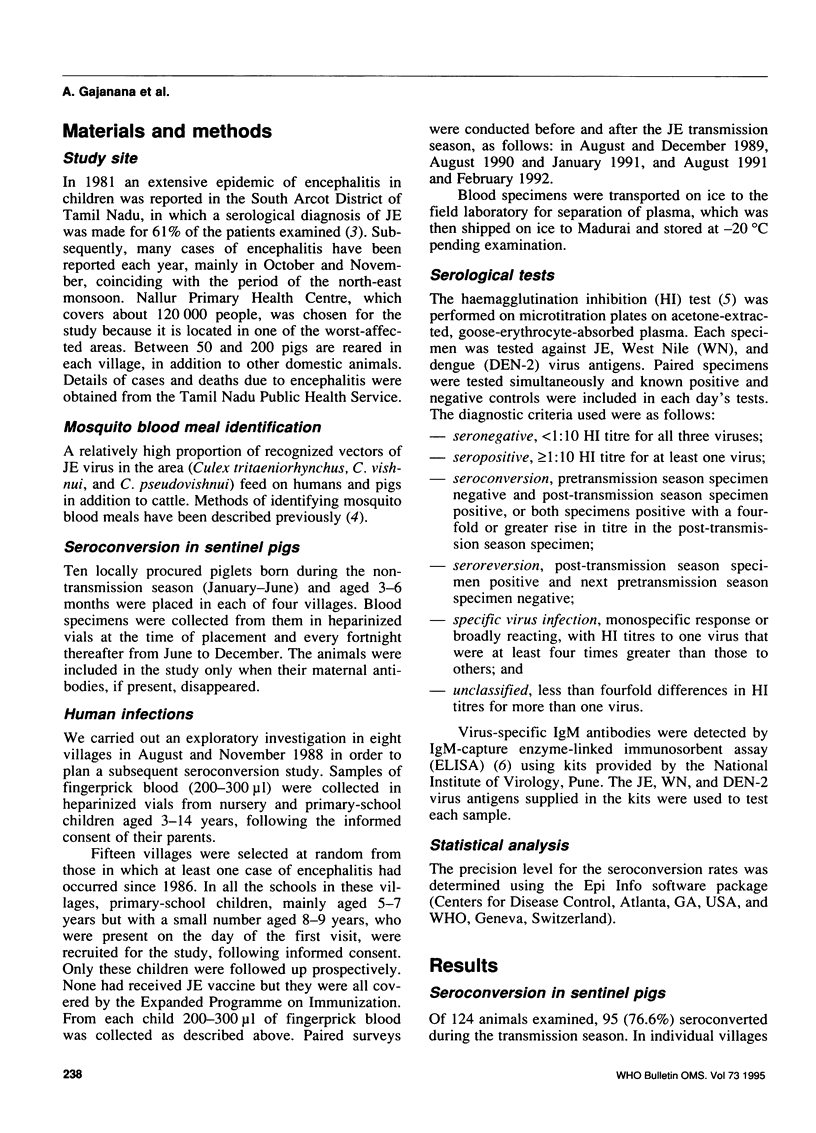
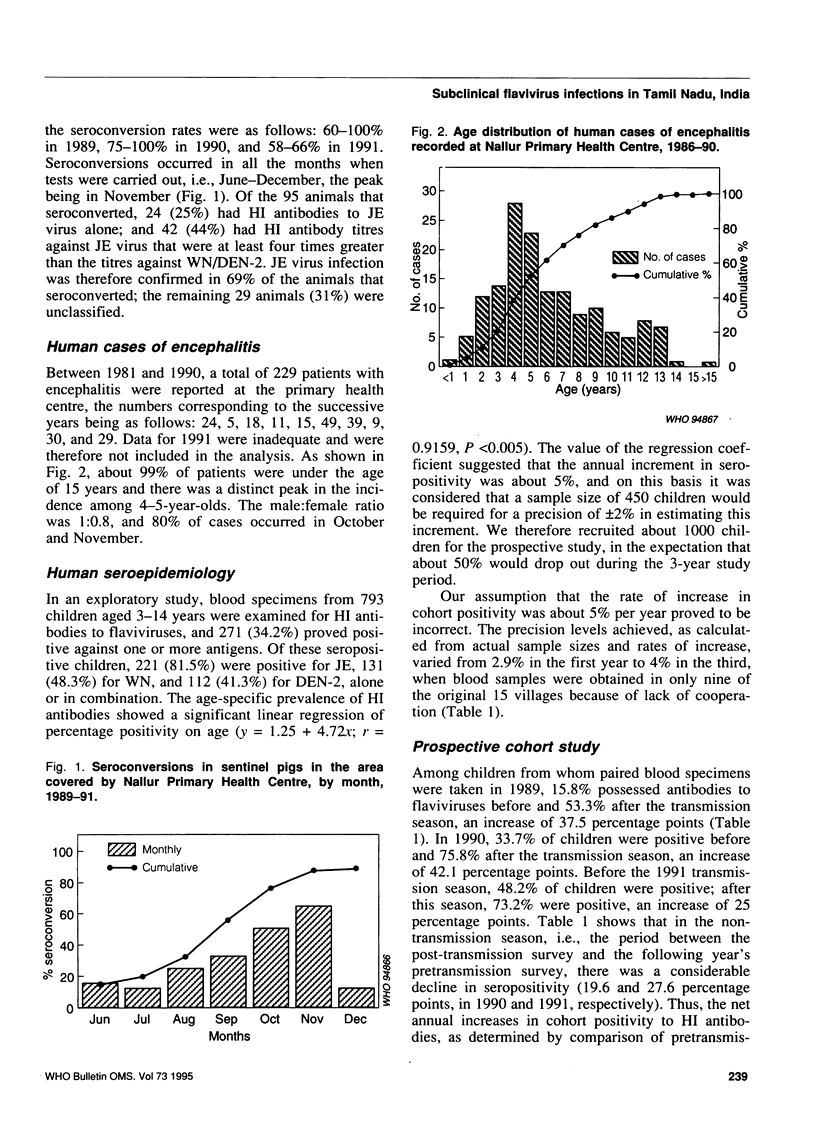
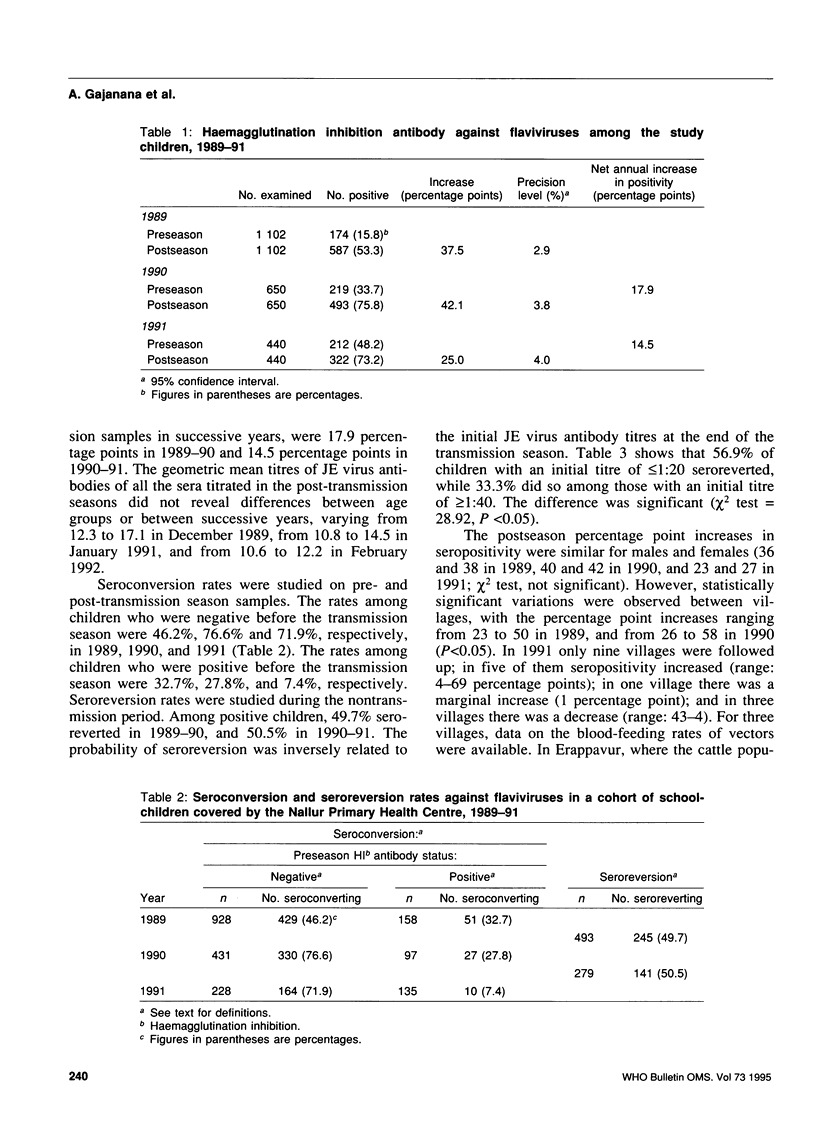
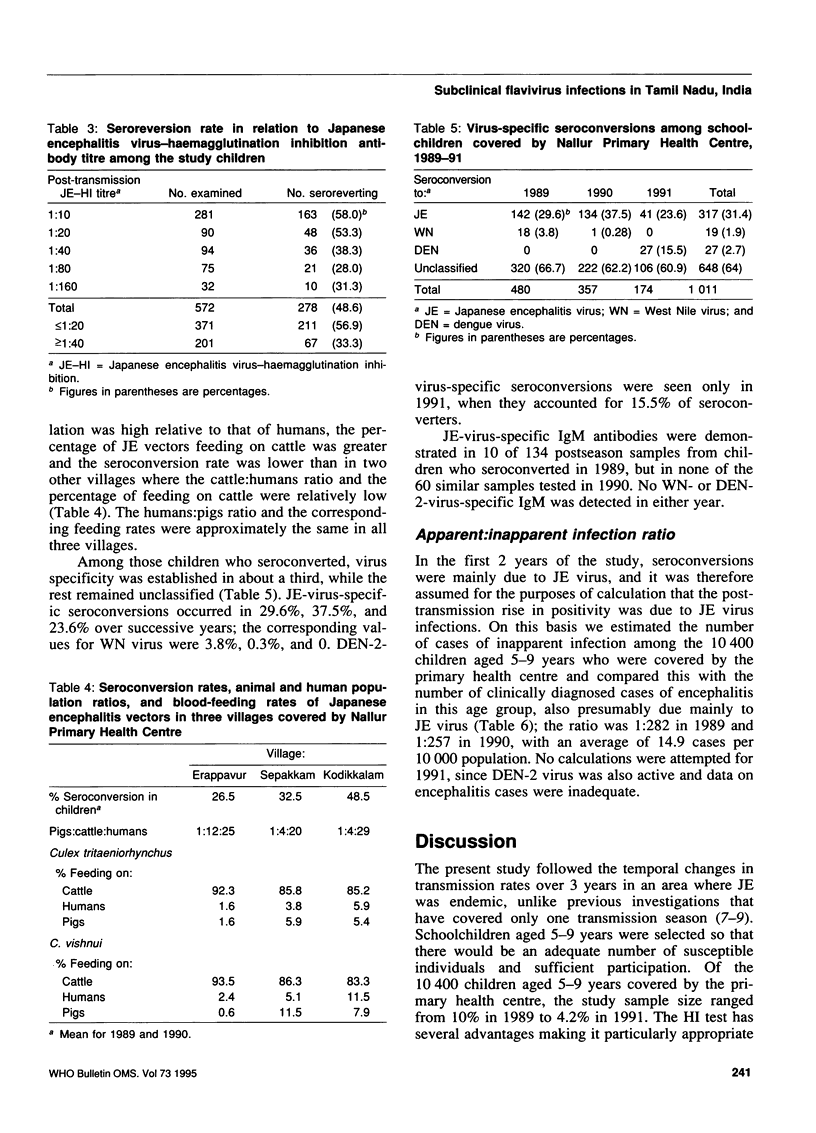
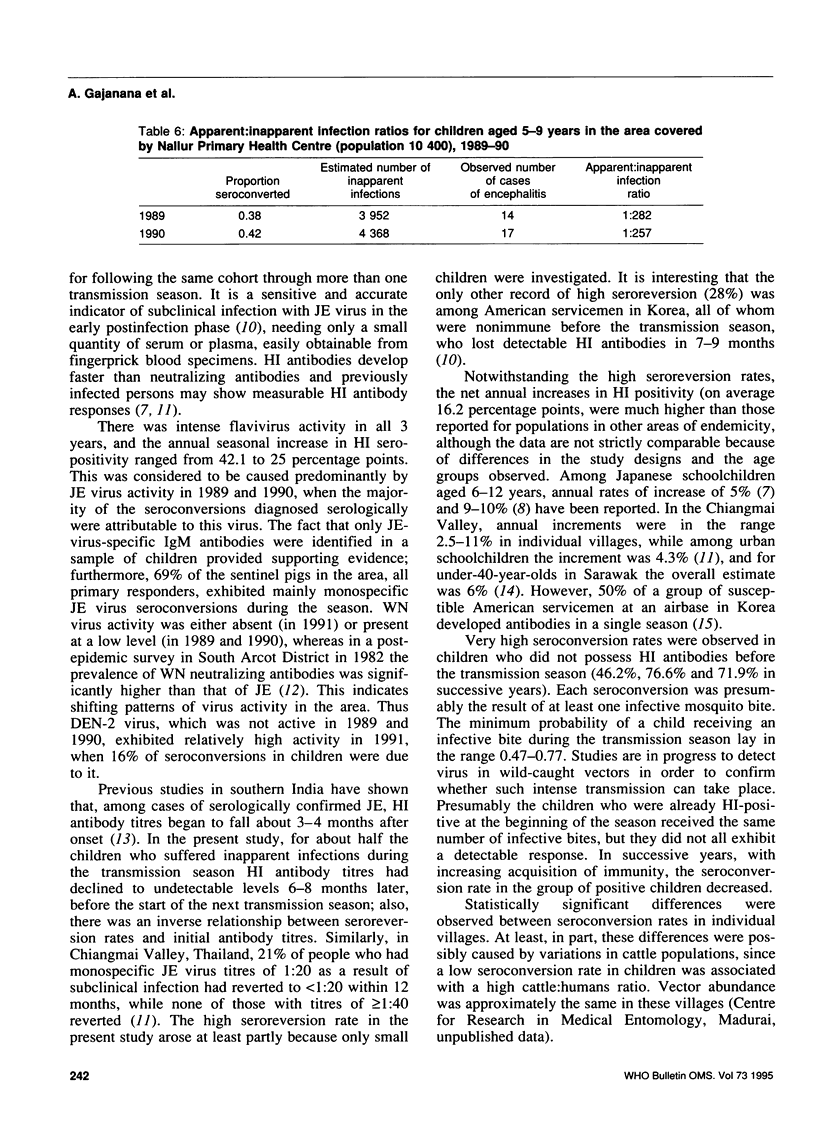
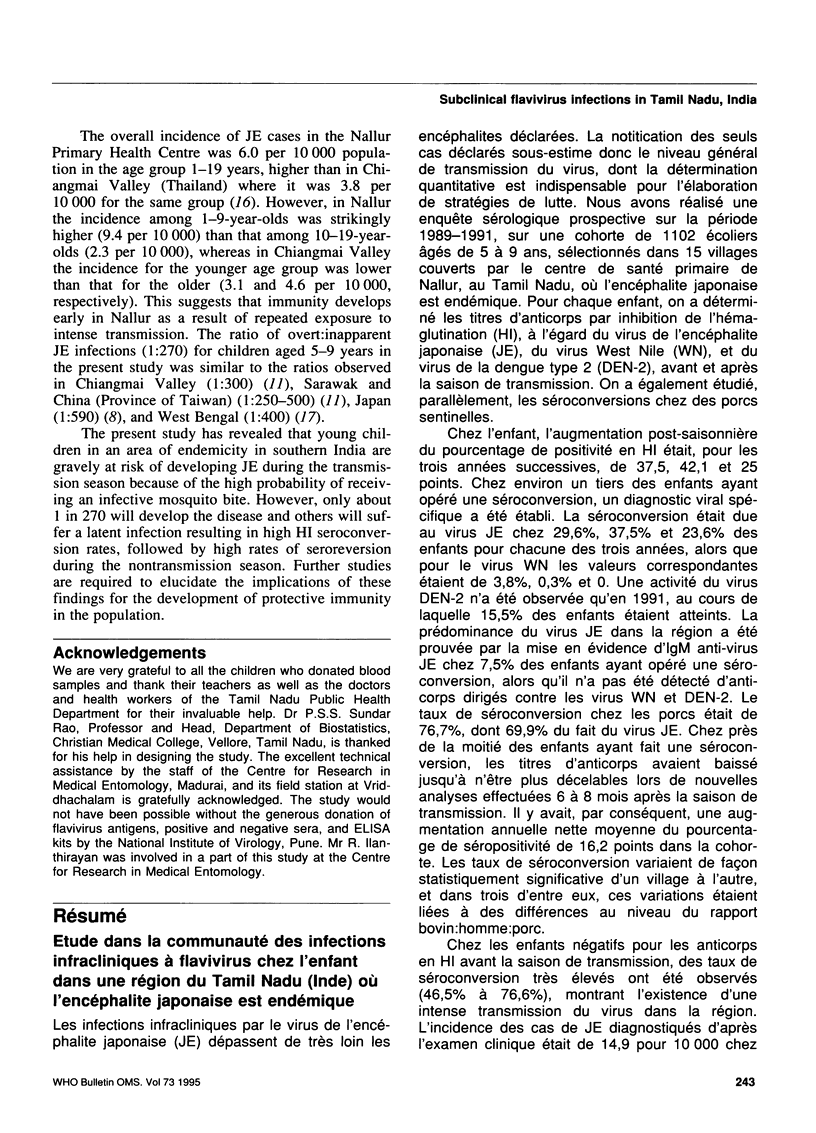

Selected References
These references are in PubMed. This may not be the complete list of references from this article.
- Burke D. S., Nisalak A., Ussery M. A. Antibody capture immunoassay detection of japanese encephalitis virus immunoglobulin m and g antibodies in cerebrospinal fluid. J Clin Microbiol. 1982 Dec;16(6):1034–1042. doi: 10.1128/jcm.16.6.1034-1042.1982. [DOI] [PMC free article] [PubMed] [Google Scholar]
- CLARKE D. H., CASALS J. Techniques for hemagglutination and hemagglutination-inhibition with arthropod-borne viruses. Am J Trop Med Hyg. 1958 Sep;7(5):561–573. doi: 10.4269/ajtmh.1958.7.561. [DOI] [PubMed] [Google Scholar]
- Carey D. E., Myers R. M. Japanese encephalitis studies in Vellore, South India. 3. Neutralizing activity of human survey sera. Indian J Med Res. 1968 Sep;56(9):1330–1339. [PubMed] [Google Scholar]
- Grossman R. A., Edelman R., Gould D. J. Study of Japanese encephalitis virus in Chiangmia Valley, Thailand. VI. Summary and conclusions. Am J Epidemiol. 1974 Jul;100(1):69–76. doi: 10.1093/oxfordjournals.aje.a112010. [DOI] [PubMed] [Google Scholar]
- Grossman R. A., Edelman R., Willhight M., Pantuwatana S., Udomsakdi S. Study of Japanese encephalitis virus in Chiangmai Valley, Thailand. 3. Human seroepidemiology and inapparent infections. Am J Epidemiol. 1973 Aug;98(2):133–149. doi: 10.1093/oxfordjournals.aje.a121538. [DOI] [PubMed] [Google Scholar]
- HALSTEAD S. B., GROSZ C. R. Subclinical Japanese encephalitis. I. Infection of Americans with limited residence in Korea. Am J Hyg. 1962 Mar;75:190–201. [PubMed] [Google Scholar]
- Rao C. V., Risbud A. R., Rodrigues F. M., Pinto B. D., Joshi G. D. The 1981 epidemic of Japanese encephalitis in Tamil Nadu & Pondicherry. Indian J Med Res. 1988 May;87:417–421. [PubMed] [Google Scholar]
- Reuben R., Thenmozhi V., Samuel P. P., Gajanana A., Mani T. R. Mosquito blood feeding patterns as a factor in the epidemiology of Japanese encephalitis in southern India. Am J Trop Med Hyg. 1992 Jun;46(6):654–663. doi: 10.4269/ajtmh.1992.46.654. [DOI] [PubMed] [Google Scholar]
- SOUTHAM C. M. Serological studies of encephalitis in Japan. II. Inapparent infections by Japanese B encephalitis virus. J Infect Dis. 1956 Sep-Oct;99(2):163–169. doi: 10.1093/infdis/99.2.163. [DOI] [PubMed] [Google Scholar]
- Simpson D. I., Bowen E. T., Platt G. S., Way H., Smith C. E., Peto S., Kamath S., Lim Boo Liat, Lim Theong Wah Japanese encephalitis in Sarawak: virus isolation and serology in a Land Dyak village. Trans R Soc Trop Med Hyg. 1970;64(4):503–510. doi: 10.1016/0035-9203(70)90070-2. [DOI] [PubMed] [Google Scholar]
- Umenai T., Krzysko R., Bektimirov T. A., Assaad F. A. Japanese encephalitis: current worldwide status. Bull World Health Organ. 1985;63(4):625–631. [PMC free article] [PubMed] [Google Scholar]


